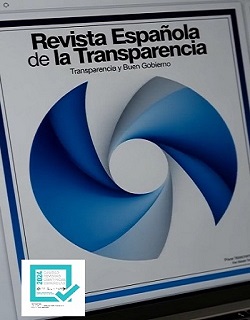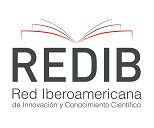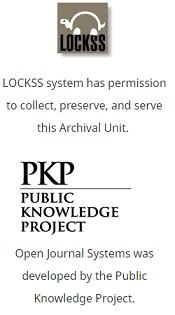Efectividad del control gubernamental: evidencia desde la Contraloría General del Estado de Ecuador
DOI:
https://doi.org/10.51915/ret.401Palabras clave:
Auditoría gubernamental, entidades fiscalizadoras superiores, control gubernamental, corrupción administrativa, rendición de cuentasResumen
Este artículo evalúa la efectividad del control institucional ejercido por la Contraloría General del Estado del Ecuador (CGE) en Ecuador entre 2019 y 2023, como entidad fiscalizadora superior (EFS). A través de una metodología mixta, se analizaron 392 informes de cumplimiento de recomendaciones, entrevistas a personal experto en auditoría gubernamental y datos oficiales sobre la determinación de responsabilidades y los valores de recaudación. Los resultados revelan una alta tasa de cumplimiento formal del 84%, pero con una persistencia de debilidades estructurales en aspectos como supervisión, contratación y gestión documental, identificando patrones de ineficacia institucional. Se evidencia una brecha significativa entre el monto de responsabilidades determinadas y lo efectivamente recaudado, lo que señala las limitaciones en la capacidad sancionadora de este órgano de control. Se concluye que para consolidar la efectividad se requiere mejorar la articulación interinstitucional, adoptar auditorias con enfoque preventivo y rediseñar mecanismos de seguimiento y sanción.
Descargas
Estadísticas globales ℹ️
|
0
Visualizaciones
|
0
Descargas
|
|
0
Total
|
|
Citas
BÁGER, G. 2011. Corruption Risk in Public Administration. Public Finance Quarterly, vol. 56, num. 1: 44–57.
BOVENS, M. 2007. “Analyzing and Assessing Public Accountability: A Conceptual Framework”. European Law Journal, vol. 13, num.4: 447-468.
CANGIANO, M., CURRISTINE, T., & LAZARE, M. 2013. Public Financial Management and Its Emerging Architecture. International Monetary Fund.
CLARKE, R. V. 2008. “Situational Crime Prevention”, en R. WORTLEY, & L. MAZEROLLE, Environmental Criminology and Crime Analysis. Cullompton: Willan .
COHEN, L. E., & FELSON, M. 1979. “Social Change and Crime Rate Trends: A Routine Activity Approach”. American Sociological Review, num. 44: 588-608.
DE BENEDETTO, M. 2018. “Effective law from a regulatory and administrative law perspective”. European Journal of Risk Regulation,vol. ix, num. 9, esp: 406–07.
DE BENEDETTO, M. 2015. “Corruption and controls”. European Journal of Law Reform, num. 17: 479.
DESMEDT, E. 2017. “Impact of performance audit on the administration: A belgian study (2005-2010)”. Managerial Auditing Journal, vol. 32, num. 3: 251-275, https://doi.org/10.1108/MAJ-04-2016-1368.
EBUA OTIA, J. & BRACCI, E. (2022). “Digital transformation and the public sector auditing: The SAI's perspective”. Financial Accountability & Management, vol. 38, num. 2: 252-280.
ESADZE, L. 2013. Glossary of the conflict of interest and corruption terms.
FAZEKAS, M., & TÓTH, I. J. 2016. “From corruption to state capture: A new analytical framework with empirical applications from Hungary”. Political Research Quarterly, vil. 69, num. 2: 320-334.
FELSON, M. 2002. Crime and Everyday Life Thousand Oaks,California: Sage Publications.
FERRY, L., ECKERSLEY, P., & ZAKARIA, Z. 2015. “Accountability and transparency in English local government: moving from ‘matching parts’ to ‘awkward couple’?” Financial Accountability & Management, vol. 31, num. 3: 345-361.
GENDRON, Y., COOPER, D. J., & TOWNLEY, B. 2001. “In the name of accountability - State auditing, independence and new public management”. Accounting, Auditing & Accountability Journal, vol. 14, num. 3: 278–310.
GEORGE, A., & BENNETT, A. 2004. Case Studies and Theory Development in the Social Sciences. Cambridge, Massachusetts: MIT Press.
GRAYCAR, A., & SIDEBOTTOM, A. 2012. “Corruption and control: a corruption reduction approach”. Journal of Financial Crime, vol. 19, num. 4: 384–399.
JENSEN, M., & MECKLING, W. 1976. “Theory of the firm: Managerial behavior, agency costs and ownership structure”. Journal of Financial Economics, vol. 3, num. 4: 305-360, ISSN 0304-405X, https://doi.org/10.1016/0304-405X(76)9002.
JOHNSØN, J., TAXELL, N., & ZAUM, D. 2012. “Mapping evidence gaps in anti-corruption. Assessing the state of operationally relevant evidence in donors’ actions and approaches to reducing corruption”. U4 Issues Paper No. 2012, num. 7:1-74
HAWKINS, K., & THOMAS, J. M. 1984. “The enforcement process in regulatory bureaucracies”. Enforcing regulation, num.3: 13-15.
HERNÁNDEZ SAMPIERI, R., FERNÁNDEZ, C., & BAPTISTA, P. 2014. Metodología de la investigación, Sexta Edición. México: Editorial Mc Graw Hill.
KLITGAARD, R. E. 1988. Controlling corruption, Univ of California Press.
KROOK, M., & O ́BRIEN, D. 2012. “All the President’s Men? The Appointment of Female Cabinet Ministers Worldwide”. The Journal of Politics, vol. 74, num. 3: 840-855.
LEEUW, F. L. 2011. “On the effects, lack of effects and perverse effects of performance audit”, en J. LONSDALE, P. WILKINS, & T. LING, Performance auditing: Contributing to accountability in democratic government. Edward Elgar Publishing.
LONSDALE, J. 2008. “Balancing independence and responsiveness”. Evaluation, vol. 14, num. 2: 227–48.
LONSDALE, J., WILKINS, P., & LING, T. 2011. Performance auditing: Contributing to accountability in democratic government . Edward Elgar Publishing.
LONSDALE, J. 1999. “Impacts”, en C. POLLITT, X. GIRRE, J. LONSDALE, R. MUL, H. SUMMA, & M. WAERNESS, Performance or Compliance?: Performance Audit and Public Management in Five Countries. Oxford: Oxford University Press.
MAHONEY, J. (28 de August de 2003). “Tentative answers to questions about causal mechanisms”. Paper presented at the annual meeting of the American Political Science Association. Philadelphia, PA.
MARQUETTE, H., & PFEIFFER, C. 2015. “Corruption and Collective Action”. U4 Research Paper, num. 32. Developmental Leadership Program, University of Birmingham.
MARTÍNEZ-COUSINOU, G., & ANDERSSON, S. 2009. “El control institucional de la corrupción: un marco analítico para su estudio”. Revista del CLAD Reforma y Democracia, num. 43: 103–126.
http://www.redalyc.org/articulo.oa?id=357533674005
MOENE, K., & SØREIDE, T. 2016. “Corruption control”. Crime, Law and Social Change, num. 66: 147-163.
MORIN, D. 2001. “Influence of value for money audit on Public Administrations: Looking beyond appearances”. Financial Accountability & Management, vol. 17, num. 2:99–117. https://doi.org/10.1111/1468-0408.00123.
Nagin, D. S. 2013. “Deterrence in the Twenty-First Century: A Review of the Evidence”. Crime and Justice, vol. 42, num.1: 199–263.
National Institute of Justice (NIJ). 2016. Five Things About Deterrence. NCJ 247350.
OECD. 2022. Fortaleciendo el impacto de la Contraloría de la República de Chile: Lecciones de las ciencias conductuales para la Integridad Pública, Estudios de la OCDE sobre Gobernanza Pública. Paris: OECD Publishing, https://doi.org/10.1787/f21e41f7-es.
OECD. 2021. El control preventivo y concomitante de la Entidad Fiscalizadora Superior de Colombia. París: OECD Publishing.
OECD. 2007. Bribery in Public Procurement. Methods, Actors and Counter-Measures. Abingdon: OECD.
PERSSON, A., ROTHSTEIN, B., & TEORELL, J. 2013. “Why Anticorruption Reforms Fail—Systemic Corruption as a Collective Action Problem”. Governance, vol, 26, num.3: 449–471.
PETERS, B. 2005. “Squaring several circles: Co- ordination, performance and accountability”, en G. DREWRY, G. C. TANQUEREL, & T. TANQUEREL, Contracts, Performance Measurement and Accountability in the Public Sector. Amsterdam: IOS Press.
POWER, M. 1997. The audit society: Rituals of verification. OUP Oxford.
POWER, M. 2007. Organized Uncertainty. Designing a World of Risk Management. New York: Oxford. University Press.
POLLITT, C. 2003. Performance audit in western Europe: Trends and choices. Critical Perspectives on Accounting, num. 14: 157–70.
ROSS, S. 1973. “The economic theory of agency: the principal’s problem”. The American Economic Review, vol. 63, num 2: 134-139.
ROSE-ACKERMAN, S. 1978. Corruption: a study in political economy. New York: Academic.
SANTISO, C. 2019. The Political Economy of Government Auditing: Financial Governance and the Rule of Law in Latin America and Beyond. Routledge.
SANTISO, C. 2021. “La digitalización como estrategia anticorrupción”. OECD Development Matters, 5 de agosto de 2021
TYLER, T. R. 2006. Why people obey the law. Princeton university press.
UGUR, M., & DASGUPTA, N. 2011. Evidence on the economic growth impacts of corruption in low-income countries and beyond: a systematic review. London: : EPPI-Centre, Social Science Research Unit, Institute of Education, University of London.
UVALLE BERRONES, R. 2012. “Presentación”, en Sánchez González, José Juan. La corrupción administrativa en México. México: IAPEM. pp. 9-25
VAN LOOCKE, E., & PUT, V. 2011. “The impact of performance audits: A review of the existing evidence”, en J. LONSDALE, P. WILKINS, & T. LING, Performance auditing: Contributing to accountability in democratic government,, pp. 175-208.
VILLENEUVE, J. P., MUGELLINI, G., & HEIDE, M. 2020. “International anti-corruption initiatives: a classification of policy interventions”. European Journal on Criminal Policy and Research, vol. 26, num. 4: 431-455.
WALSH, A. 1996. “Performance auditing and legislative oversight in the context of public management reform: The US experience”, en O. (ed.), Performance Auditing and the Modernisation of Government. Paris: OECD, pp.227-241.
ZHANG, Y., & VARGAS-HERNÁNDEZ, J. G. 2017. “Introduction: Corruption and Government Anti-Corruption Strategies”, en Y. ZHANG, & C. LAVENA, Government Anti-Corruption Strategies: A Cross-Cultural Perspective. Abingdon: Routledge, pp. xiii-xxv.
Descargas
Publicado
Cómo citar
Número
Sección
Licencia
Derechos de autor 2025 Revista Española de la Transparencia

Esta obra está bajo una licencia internacional Creative Commons Atribución-CompartirIgual 4.0.
La Revista Española de la Transparencia apuesta por el acceso gratuito y uso sin restricciones a su información y recursos digitales. La política de acceso abierto se materializa en:
- Acceso gratuito, libre y universal.
- Los autores y la Revista conceden a cualquier usuario potencial el derecho a utilizar, copiar o distribuir el contenido de manera ilimitada e irrevocable, con la única condición de reconocer la autoría.
- Los documentos electrónicos correspondientes al contenido de la Revista se incluyen en formato digital para permitir su acceso libre.

















